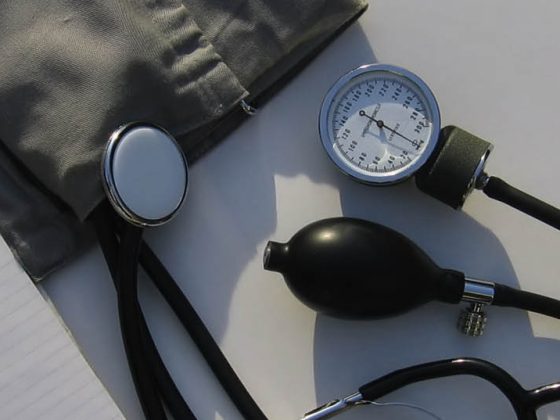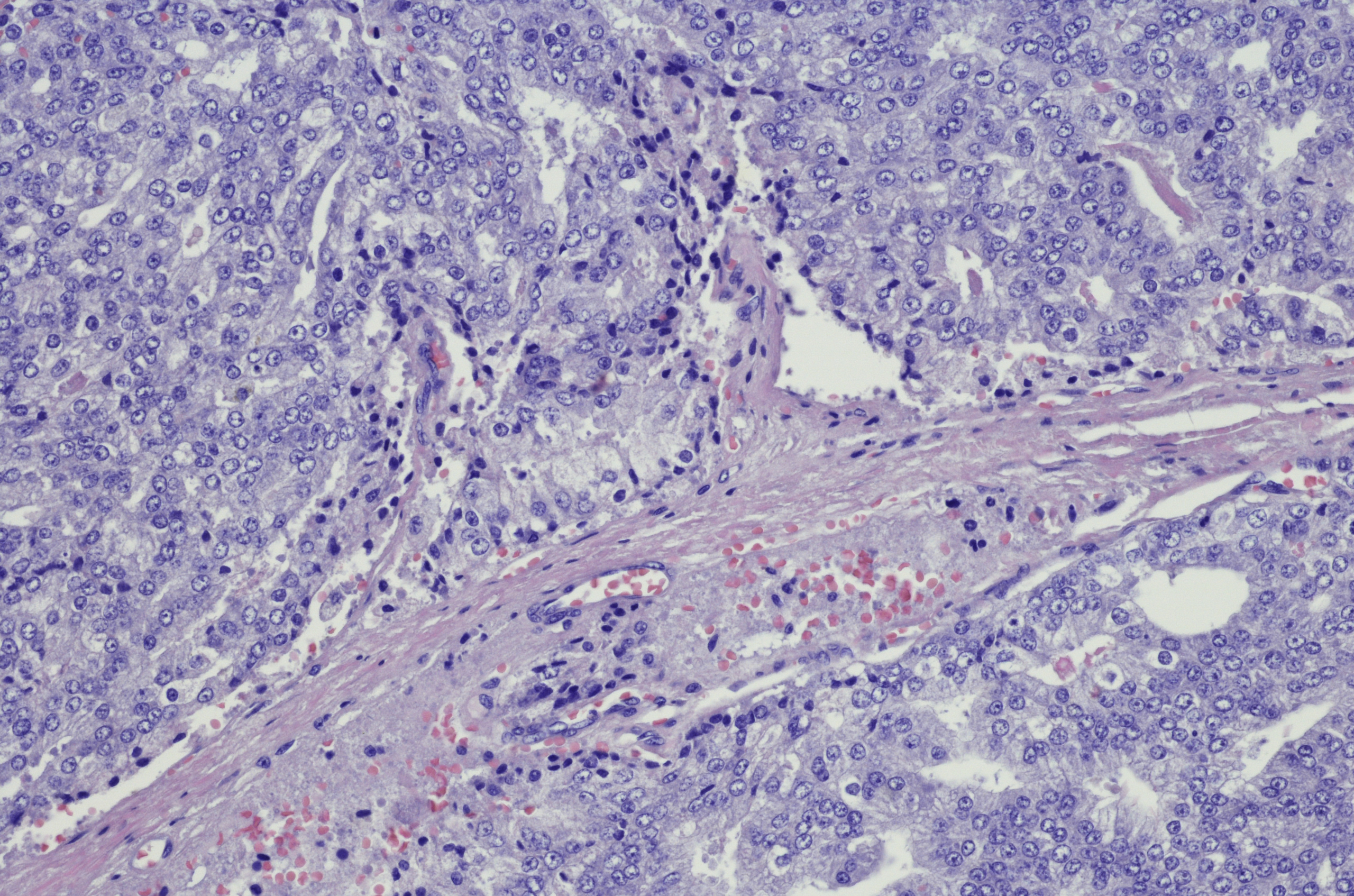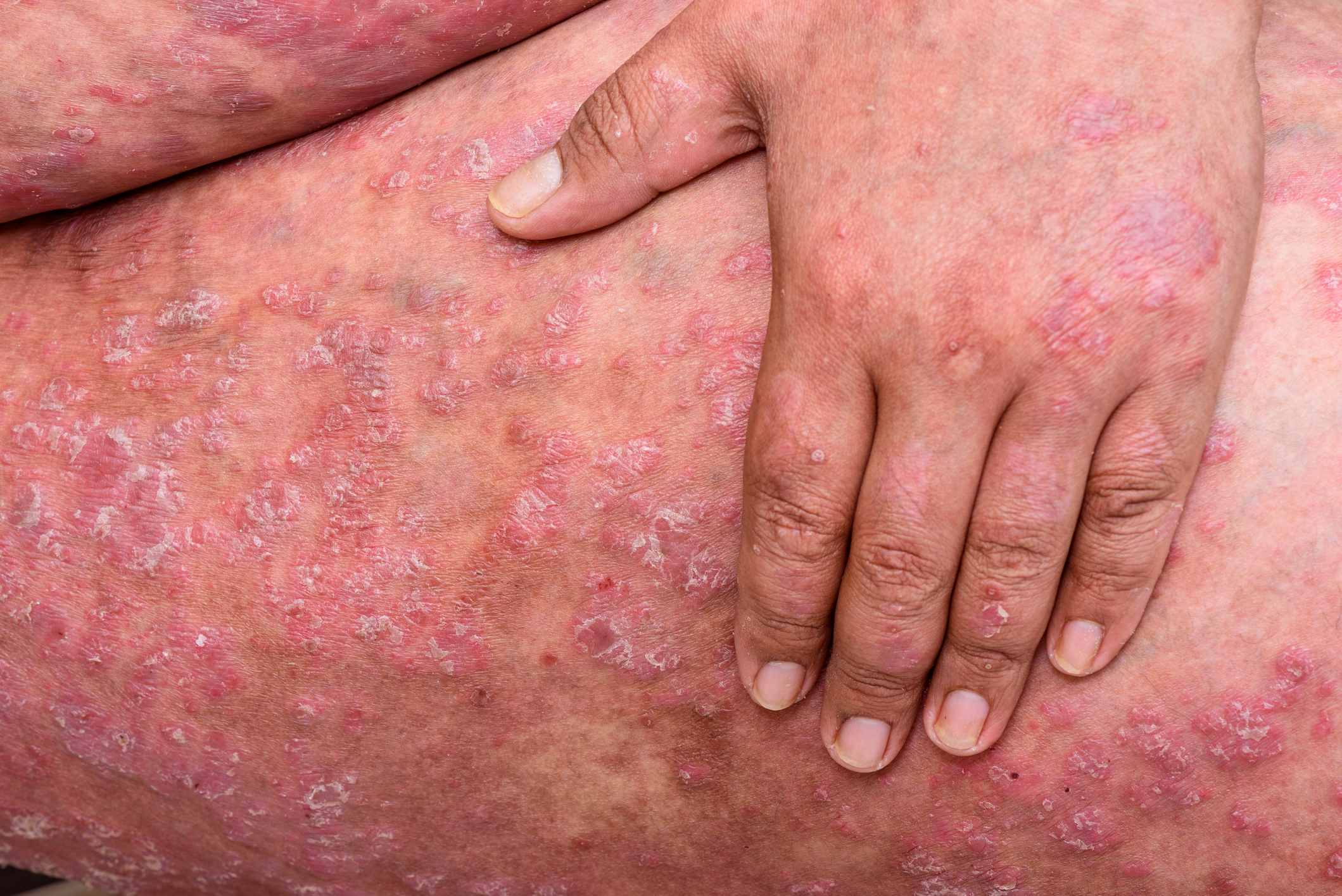This year’s congress of the European League Against Rheumatism (EULAR) in London once again offered exciting news from the field of rheumatology. Recent findings on the pathogenesis of juvenile idiopathic arthritis suggest a link to microbial exposure in childhood. With regard to therapy, it is examined how the out-of-control immune system can be brought back into balance. Rheumatoid arthritis as a disease continuum was also addressed.
Prof. Berent Prakken, MD, Utrecht, spoke on the still unexplained pathogenesis of juvenile idiopathic arthritis (JIA). A combination of genetic factors and environmental predisposition is suspected. However, there are still many unanswered questions about environmental factors.
“Is there a correlation between antibiotic administration and the onset of JIA?” the speaker asked the audience. An English case-control study in a large representative pediatric population reached this conclusion [1]. Each antibiotic administration was associated with a twofold increase in the risk of onset of JIA (odds ratio of 2.1; 95% CI 1.2-3.5). This relationship was dose-dependent. He did not show up with antifungal or antiviral medications. That is, upper respiratory tract infections treated with antibiotics were more strongly associated with JIA than untreated infections. Consequently, antibiotic use appears to play a role in the pathogenesis of JIA. Presumably, changes in the microbiome are responsible.
The immune system and the microbial environment are relevant in any case. For example, cesarean section has been shown to increase the risk of diseases related to immune function. The effect was mainly seen after elective cesarean section with regard to JIA [2]. Also novel is the finding that children who have siblings have a 54% lower risk of JIA (OR 0.46; 95% CI 0.28-0.74; p=0.001). This effect was also “dose-dependent”: the more siblings, the better (with risk reductions up to 75%), and the younger the siblings, the better [3]. The study supports the hypothesis that children who are more exposed to microorganisms at a young age (which is the case with siblings) are less likely to suffer from autoimmune diseases later on.
When the immune system goes haywire
“Popular research efforts at the moment are in the area of Tregs, which are regulatory T cells that determine the self-tolerance of the immune system,” the speaker said. He illustrated this with publications on this topic on Pubmed. In recent years, great efforts have been made to restore the malfunctioning immunological balance between effector T cells (Teffs) and Tregs in autoimmune diseases. However, it was not clear why the immune response gets so out of control in JIA in the first place, although it could be shown that Tregs are strongly upregulated in the synovial fluid of the patients (compared to peripheral blood). Until now, the explanation was sought primarily in the CD4+ T helper cells. It is known that activated phenotypes of these cells can be intrinsically resistant to endogenous Treg-driven suppression, i.e., without the contribution of other cells such as antigen-representing cells. This phenotype is upregulated in the synovial fluid of JIA patients [4].
Current research shows that CD8+ T cell homeostasis is also disrupted at a crucial point in autoimmune diseases. Indeed, a resistant (activated) phenotype is also found specifically in the synovial fluid of JIA patients and is self-sustaining, i.e., not necessarily dependent on the presence of antigen-representing cells or CD4+ T cells. It was also checked whether the suppressor capability of the Tregs was responsible for this, which was not the case. Even with Tregs from healthy individuals or peripheral blood, CD8+ T cells remained resistant to suppression, although slight improvements were observable, therefore an additional functional defect of Tregs in JIA cannot be excluded.
In this context, one mediator that specifically maintains the resistance of CD8+ T cells but not CD4+ T cells is likely to be interferon-γ. This is secreted to a significant extent by the CD8+ cells themselves – possibly why CD8+ T cells are more susceptible to its activity.
CONCLUSION: Response to suppression can be restored in both T cell types by tumor necrosis factor inhibition and in CD8+ T cells specifically also by interferon-γ blockade. In particular, autocrine release of the proinflammatory interferon-γ maintains CD8+ T cell resistance. The two resistance mechanisms of T-cell types should be studied separately in the future to achieve therapeutic advances. It is already clear that different players are responsible for the impaired regulation of the immune system in JIA (antigen-representing cells, CD4+ T cells, CD8+ T cells and Tregs) [5,6].
CD73 – an enzyme of crucial relevance
Adenosine is an important mediator in the inhibition of inflammatory processes. The small molecule suppresses immune effector cells, which occurs through the two-step hydrolysis of ATP by extracellular CD39 and CD73 ectonucleotidases. CD39 and CD73 are expressed in different populations of immune cells and on tumor cells (the latter fact is currently causing discussion in oncology, where exactly the opposite should be achieved, namely an upregulation of the immune system). In JIA, immune cells appear to express less CD73 than normal, which drives the immune response. The specific finding of a related study is that the enzyme CD73, which plays a critical role in the production of adenosine, is less expressed on CD8+ lymphocytes in synovial fluid in patients with JIA than in controls. Expression is also lower compared to peripheral blood of JIA patients. It also depends on the disease severity: The more severe the JIA, the lower the CD73 expression of synovial lymphocytes [7].
Rheumatoid arthritis – a disease continuum
Knowledge of the course of rheumatoid arthritis (RA) has been increasingly refined in recent years. Case-control studies using blood donations have shown that up to 50% of individuals who later develop RA exhibit specific serologic abnormalities several years before symptom onset. Specifically, elevated IgM rheumatoid factor (RF) and ACPA serum levels were found in participants who were still healthy at the time. These findings are associated with a high risk of developing RA later in life, the authors concluded [8].
According to current knowledge, six chronological phases can be defined:
A: Genetic risk factors for RA.
B: Environmental factors
C: systemic autoimmunity associated with RA (at most initiated by localized autoimmune processes in the mucosal surface of the lung, periodontium, and intestine).
D: Arthralgias without clinical arthritis (sometimes symptomatic individuals show changes on imaging without already having clinical arthritis).
E: undifferentiated RA
F: RA (meeting disease criteria).
“So far, the goal of preventing RA has not been achieved,” said Prof. Cem Gabay, MD, of rheumatology at HUG in Geneva. The research interest is admittedly great and there are certainly successes to show. The PRAIRI study, presented at EULAR, tested a single dose of 1000 mg rituximab or placebo in individuals at high risk for RA (arthralgia, elevated serum levels of IgM-RF, ACPA, as well as CRP, but no clinical arthritis). Pretreatment in all subjects consisted of 100 mg of methylprednisolone i.v. The benefit (p<0.0001) in the rituximab group was significant: after one year, the risk of RA was reduced by 55%.
Use of glucocorticoids in early RA.
“What have recent years taught us about the use of glucocorticoids in early RA?” asked Prof. Gabay. Several recent study results are worth noting in this context.
An aggressive treat-to-target strategy with methotrexate (MTX) and intra-articular glucocorticoids is highly effective in clinical and radiographic endpoints at two years. The addition of adalimumab induction therapy (in the first year) provides no clinical benefit [9].
In ACPA-positive patients with early RA, the addition of prednisolone (as part of the COBRA strategy: starting at 60 mg/d, gradually reduced to 7.5 mg/d and less, stopping at week 36) to MTX with/without ciclosporin reduces radiographic progression and leads to clinical and functional improvement. This effect cannot be observed in ACPA-negative patients, in whom minimal progression occurs regardless of the treatment regimen. Conversely, MTX monotherapy is associated with significant radiographic deterioration in ACPA-positive patients. ACPA is thus an important biomarker for the choice of bridging therapy in early RA. If ACPA positivity is present, steroid addition seems reasonable [10].
A study on the long-term use of steroids comes to a similar conclusion: In combination with disease-modifying anti-rheumatic drugs (DMARDs), low-dose prednisolone for two years (7.5 mg/d) slows progressive radiographic damage in early RA significantly more than DMARD monotherapy [11]. In this context, positivity for ACPA and rheumatoid factor (RF) is an independent predictor of radiological damage, but only in patients who were not additionally treated with steroids. This association is not found in steroid-treated patients, making prednisolone therapy a mediating factor critically related to the reduction of radiographic damage. Or, in other words, patients with poor prognosis, i.e., RF and ACPA positivity, have a chance of a better prognosis with prednisolone addition. This in turn suggests that early therapy with prednisolone acts not only on inflammation but also on pathogenetic mechanisms associated with autoimmunity. It is possible that early and intense reduction of inflammation suppresses a strong autoimmune response [12].
In conclusion, the presence of poor prognostic markers appears to be significant for the benefit of steroid addition. The CareRA trial in patients without the classic markers of poor prognosis failed to demonstrate superiority of prednisone bridging (30 mg reduced to 5 mg/d, COBRA-Slim regimen) over MTX alone in the primary endpoint, remission at 16 weeks [13]. However, long-term control of disease activity and functionality were improved.
Thus, the last word on optimal initial therapy in early RA has not yet been spoken, especially with regard to steroid side effects. This is shown by long-term evaluations BARFOT study [14]. Targeting systemic inflammation in RA is, in principle, protective against cardiovascular complications. This is related to the fact that carotid artery intima-media thickness increases rapidly in individuals with cardiovascular risk factors and systemic inflammation. However, long-term steroid use increases the risk of cardiovascular events [15], and there were new data on this most recently at the 2015 ACR meeting [16].
Source: EULAR Congress, June 8-11, 2016, London.
Literature:
- Horton DB, et al: Antibiotic Exposure and Juvenile Idiopathic Arthritis: A Case-Control Study. Pediatrics 2015 Aug; 136(2): e333-343.
- Kristensen K, Henriksen L: Cesarean section and disease associated with immune function. J Allergy Clin Immunol 2016 Feb; 137(2): 587-590.
- Miller J, et al: Sibling exposure and risk of juvenile idiopathic arthritis. Arthritis Rheumatol 2015 Jul; 67(7): 1951-1958.
- Haufe S, et al: Impaired suppression of synovial fluid CD4+CD25- T cells from patients with juvenile idiopathic arthritis by CD4+CD25+ Treg cells. Arthritis Rheum 2011 Oct; 63(10): 3153-3162.
- Petrelli A, van Wijk F: CD8+ T cells in human autoimmune arthritis: the unusual suspects. Nat Rev Rheumatol 2016 Jun 3. doi: 10.1038/nrrheum.2016.74 [Epub ahead of print].
- Petrelli A, et al: Self-Sustained Resistance to Suppression of CD8+ Teff Cells at the Site of Autoimmune Inflammation Can Be Reversed by Tumor Necrosis Factor and Interferon-γ Blockade. Arthritis Rheumatol 2016 Jan; 68(1): 229-236.
- Botta Gordon-Smith S, et al: Correlation of low CD73 expression on synovial lymphocytes with reduced adenosine generation and higher disease severity in juvenile idiopathic arthritis. Arthritis Rheumatol 2015 Feb; 67(2): 545-554.
- Nielen MM, et al: Specific autoantibodies precede the symptoms of rheumatoid arthritis: a study of serial measurements in blood donors. Arthritis Rheum 2004 Feb; 50(2): 380-386.
- Hørslev-Petersen K, et al: Clinical and radiographic outcome of a treat-to-target strategy using methotrexate and intra-articular glucocorticoids with or without adalimumab induction: a 2-year investigator-initiated, double-blinded, randomised, controlled trial (OPERA). Ann Rheum Dis 2015 Oct 21. DOI: 10.1136/annrheumdis-2015-208166. [Epub ahead of print].
- Seegobin SD, et al: ACPA-positive and ACPA-negative rheumatoid arthritis differ in their requirements for combination DMARDs and corticosteroids: secondary analysis of a randomized controlled trial. Arthritis Res Ther 2014 Jan 16; 16(1): R13.
- Svensson B, et al: Low-dose prednisolone in addition to the initial disease-modifying antirheumatic drug in patients with early active rheumatoid arthritis reduces joint destruction and increases the remission rate: a two-year randomized trial. Arthritis Rheum 2005 Nov; 52(11): 3360-3370.
- Hafström I, et al: Rheumatoid factor and anti-CCP do not predict progressive joint damage in patients with early rheumatoid arthritis treated with prednisolone: a randomised study. BMJ Open 2014 Jul 30; 4(7): e005246.
- Verschueren P, et al: Patients lacking classical poor prognostic markers might also benefit from a step-down glucocorticoid bridging scheme in early rheumatoid arthritis: week 16 results from the randomized multicenter CareRA trial. Arthritis Res Ther 2015; 17(1): 97.
- Ajeganova S, et al: Low-dose prednisolone treatment of early rheumatoid arthritis and late cardiovascular outcome and survival: 10-year follow-up of a 2-year randomised trial. BMJ Open 2014 Apr 7; 4(4): e004259.
- del Rincón I, et al: Systemic inflammation and cardiovascular risk factors predict rapid progression of atherosclerosis in rheumatoid arthritis. Ann Rheum Dis 2015 Jun; 74(6): 1118-1123.
- de Hair M, et al: Long-Term Adverse Events after Daily Concomitant Treatment with 10 mg Prednisone in the 2-Year Computer Assisted Management in Early Rheumatoid Arthritis Trial-II. ACR Meeting 2015; Abstract 619.
HAUSARZT PRAXIS 2016; 11(8): 40-42












